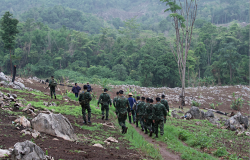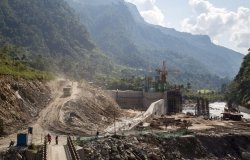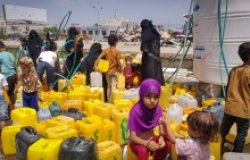Demography's Dangers
Governments and militaries are coming to recognize the security risks posed by high population growth rates, which often correlate with poverty, poor governance, and conflict.
In an April 2008 speech, CIA Director General Michael Hayden highlighted rapid population growth as one of the top trends destabilizing the globe. More than 95 percent of the planet's population growth occurs in developing countries, where overextended governments can ill afford to absorb mounting demands for education, jobs, and essential public services, such as water and sanitation.
The U.S. Department of Defense's new National Defense Strategy and the National Intelligence Council's recent report Global Trends 2025: A Transformed World reinforce Hayden's argument. Traditional security threats like terrorism and nuclear proliferation remain key priorities, but these documents demonstrate that military planners are also coming to recognize the security risks posed by high population growth rates, which often correlate with poverty, poor governance, and conflict.
Some demographers have linked countries with very young age structures to a higher risk of civil conflict. In 2000, youth made up 35 percent or more of the adult population in 44 countries—most located in sub-Saharan Africa, the Middle East, and South Asia. A study by Population Action International found that countries with such "youth bulges" have a 150 percent greater risk of conflict than those in which the ratio is more balanced.
Because countries with balanced age structures tend to be more democratic, stable, and prosperous, policymakers and governments should seize opportunities to achieve more balanced age structures. Fortunately, population trends respond to well-designed programs and policies, so leaders should focus on funding voluntary family planning programs and expanding girls' education, both of which reduce fertility rates. When given the chance to succeed, youth are a valuable national asset, and they should strive to provide them with education, jobs, and other opportunities.
For more information on the links between population and security, see the 13th issue of the Environmental Change and Security Program Report, in which seven experts discuss new research on youth bulges and other demographic security issues, including aging, climate change, migration, and defense policy.
Related Program

Environmental Change and Security Program
The Environmental Change and Security Program (ECSP) explores the connections between environmental change, health, and population dynamics and their links to conflict, human insecurity, and foreign policy. Read more










